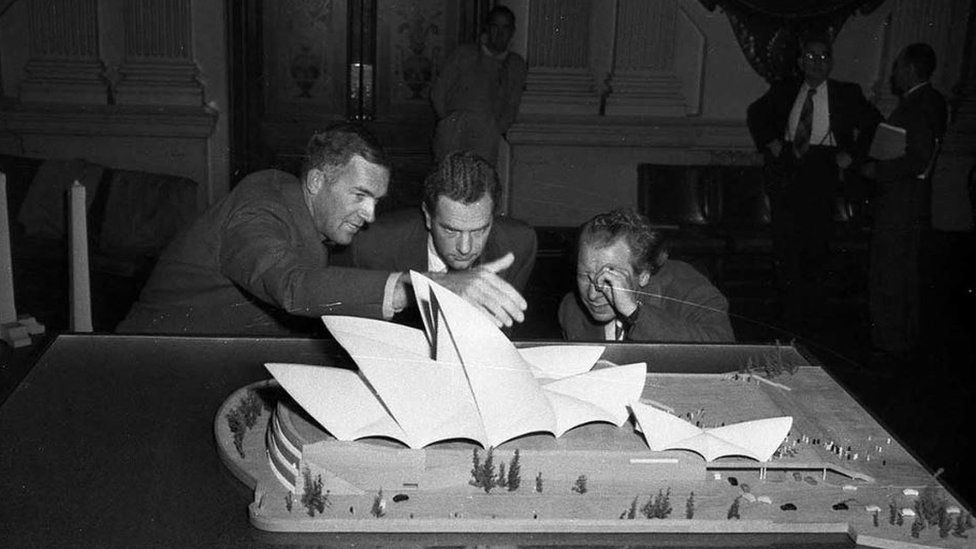One of the most iconic structures of the 20th Century, the Sydney Opera House has emerged as a symbol for modern Australia.
Its dramatic white sails broke new ground for architecture and engineering globally.
And the construction itself has been heralded by historians as a “visionary exercise in nation-building by a young, largely immigrant nation looking to define itself”.
A World Heritage-listed performance space and a meeting place for world leaders, the Opera House has hosted the likes of Bob Dylan, Ella Fitzgerald and Nelson Mandela.
As it celebrates its 50th birthday, here’s a look back at its life.
The Opera House was born out of a 1956 international competition run by the New South Wales government, to design a national performance venue on Bennelong Point that would put Sydney on the map. Out of 233 entries, the unexpected winner was the iconoclastic and largely unknown young Danish architect Jorn Utzon.

Over 10,000 workers started constructing the Opera House in 1959. The building was supposed to be completed in four years, instead it ended up taking 14. The initial budget for the structure was A$7m (£3.6m; $4.4m), but the final cost was closer to A$102m.


The Sydney Opera House was officially opened by Queen Elizabeth II on 20 October 1973, fireworks and a performance of Beethoven’s Symphony No. 9 marked the occasion.

In July 1973 Dalgerie was the first opera to be staged at the venue. Based on the love story from the popular Australian novel Keep Him My Country, it was written by the Australian composer James Penberthy.

In 1977, Swedish pop phenomenon ABBA visited the big white sails, greeted by a sea of Australian fans.


After walking free from 27 years of imprisonment for his struggle against the apartheid regime of South Africa, Nelson Mandela was celebrated by 40,000 Australians on the steps of the Opera House during his tour of the country in 1990.

Cathy Freeman, the first Aboriginal athlete to win an individual Olympic gold medal opened the 2004 Athens Olympic torch relay outside the Opera House. The image of the proud Kuku Yalanji woman – who created one of Australia’s most memorable sporting moments – was later projected on its sails in 2020 to celebrate the anniversary of her historic victory.

More recently, the Opera House has been the centrepiece of Vivid Sydney – an annual festival of light, music ideas and artistic expression. It includes outdoor immersive light installations and performances by local and international musicians.

Bennelong Point – where the Opera House was built – was a place where Aboriginal celebrations and gatherings were held for thousands of years. A new art installation called Whispers by Quandamooka artist Megan Cope, recognises the site’s ancient history.

